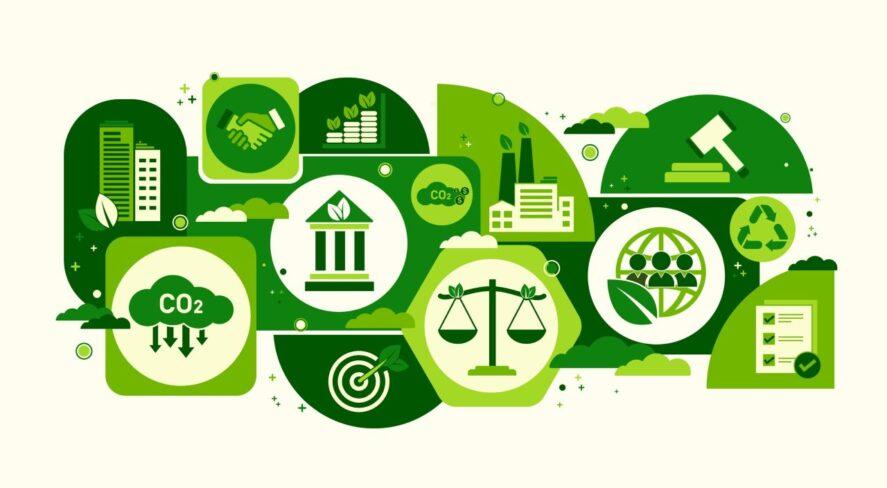Global Environmental and Sustainability Product-Related Regulations: Implications for Manufacturers
By Renee Thompson, Wesco International; Chair, SIA Environmental, Social and Governance Advisory Board
In a time where environmental awareness is increasingly prominent in global policymaking, manufacturers worldwide are encountering important regulations aimed at promoting sustainability.
Over the next three years, various key environmental and sustainability product-related regulations will be implemented, necessitating that manufacturers ensure compliance and adapt their operations accordingly.
In this article from the Security Industry Association’s Environmental, Social and Governance Advisory Board, we offer an overview of some of these regulations, as well as their jurisdictions, applicability, scope and thresholds, and share guidance for compliance and adaptation.
Global
Extended Producer Responsibility (EPR) Programs
- Jurisdiction: Various global regions, including the United Kingdom, the European Union, Canada and South Korea, and U.S. states including California, Maine and Oregon, among others
- Applicability: Manufacturers and producers of electronic goods, packaging, batteries and automotive products
- Scope: Producers are responsible for the entire life cycles of their products, including take-back, recycling and final disposal
- Thresholds: Dependent on jurisdiction
- Effective Date: Dependent on jurisdiction
EPR programs require manufacturers to take greater accountability for the environmental impacts of their products throughout their life cycles, which involves not only the initial production stages, but also the collection, recycling and proper disposal of products once they reach the end of their useful life. These programs aim to incentivize producers to design more sustainable and easily recyclable products, ultimately reducing the environmental footprint of manufactured goods.
United States
Toxic Substances Control Act (TSCA)
- Jurisdiction: United States
- Applicability: Manufacturers, importers and processors of chemical substances
- Scope: Regulation of chemical substances to ensure they do not pose unreasonable risks
- Thresholds: Substance-specific thresholds
- Effective Date: Upon completion of safety assessments and findings by the Environmental Protection Agency
The TSCA requires manufacturers to report and test chemicals used in their products. Compliance involves ensuring that all substances meet safety standards and do not pose health or environmental risks.
California Consumer Privacy Act (CCPA) – Expanding to Sustainability
- Jurisdiction: California, United States
- Applicability: Companies doing business in California
- Scope: Disclosure of environmental impact and sustainability practices
- Thresholds: Companies with gross revenues exceeding $25 million or handling the data of 50,000 or more California residents
- Effective Date: Jan. 1 following the calendar year in which thresholds are met
While traditionally focused on consumer privacy, the CCPA is expanding to include sustainability disclosures. Manufacturers must provide transparent information about their environmental practices and product sustainability.
European UnionEU Green Deal and Circular Economy Action Plan
- Jurisdiction: European Union
- Applicability: All manufacturers operating within EU member states
- Scope: Focus on reducing waste, promoting recycling and encouraging the use of sustainable materials
- Thresholds: Variable based on industry and product type
- Effective Date: Based on EU member state, with key milestones set for 2025 and beyond
The European Union’s Green Deal and Circular Economy Action Plan aim to transform the EU into a resource-efficient and competitive economy. Key aspects include enhancing product durability, reparability and recyclability. Manufacturers must align with these principles to ensure market access within the EU.
EU Ecodesign and Energy Labeling Regulations
- Jurisdiction: European Union
- Applicability: Manufacturers of energy-related products
- Scope: Minimum energy performance standards and labeling requirements
- Thresholds: Specific energy efficiency thresholds based on product categories
- Effective Date: Varies by product category, with progressive implementation starting in 2024
These regulations require manufacturers to design products that consume less energy and provide consumers with information on energy consumption through labelling. Noncompliance can result in market exclusion and significant penalties.
UK and EU Plastic Packaging Tax
- Jurisdiction: United Kingdom and European Union
- Applicability: Manufacturers, importers and consumers of plastic packaging
- Scope: Tax on plastic packaging that contains less than 30% recycled content
- Thresholds: Vary by country, with specific rates set for compliance
- Effective Dates:
- UK: April 2022
- EU:Varies by member state with key milestones starting in 2025
The Plastic Packaging Tax aims to reduce plastic waste and encourage the use of recycled materials in packaging. Manufacturers and importers must ensure that their plastic packaging meets the required recycled content thresholds to avoid taxes. Failure to comply can result in financial penalties and market restrictions. This regulation is part of a broader effort to promote sustainability and reduce the environmental impact of plastic waste within the UK and EU.
Tips for Compliance and AdaptationConduct Comprehensive Regulatory Audits
Manufacturers should regularly conduct audits to identify applicable regulations and ensure compliance. Understanding the specific requirements of each jurisdiction helps in aligning practices accordingly.
Invest in Sustainable Product Design
Adopting sustainable design principles, such as using recyclable materials and improving energy efficiency, can help manufacturers meet regulatory standards and reduce environmental impact.
Implement Robust Supply Chain Management
Ensuring that suppliers adhere to environmental regulations is crucial. Establishing stringent supply chain management practices and requiring compliance certifications from suppliers can mitigate risks.
Leverage Technology and Innovation
Utilizing advanced technologies like artificial intelligence, the Internet of Things and blockchain can enhance transparency and traceability in product life cycles, aiding in compliance and sustainability efforts.
Engage in Continuous Training and Education
Providing ongoing training for employees on environmental regulations and sustainability practices ensures that the entire organization is aligned with compliance objectives.
Finally
The global environmental and sustainability landscape is evolving rapidly, with new regulations set to come into effect over the next three years and beyond. Manufacturers must stay informed about these changes and proactively adapt their operations to ensure compliance. By embracing sustainability and leveraging innovative strategies, manufacturers can not only meet regulatory requirements, but also contribute to a more sustainable future.
Working on or through some of or all of these? Here are some resources to lend a hand.
- Sustainable Fitch – ESG regulation tracker, typically updated semiannually
- Corporate Disclosures – Sustainability online news and analysis
- Trellis – ESG news and events
Sign up for the SIA Update Newsletter
Renee Thompson, director of global sustainability and environmental compliance at Wesco International, serves as chair of SIA’s Environmental, Social and Governance Advisory Board.



